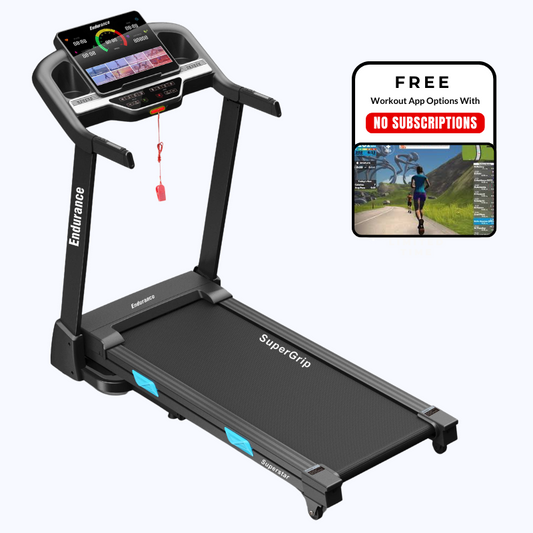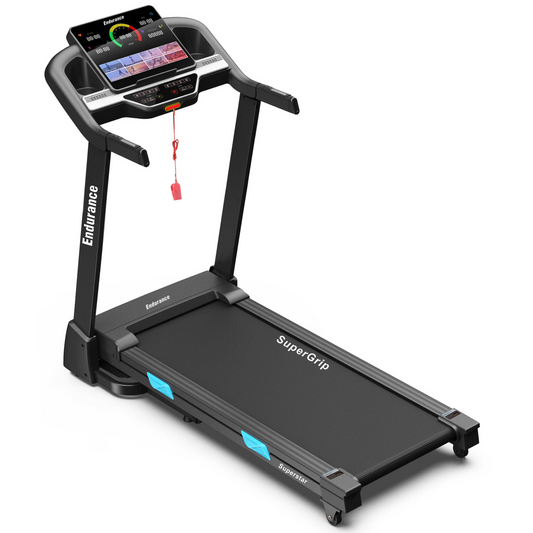Collection: Home Treadmills
Home treadmills are exercise devices designed for use at home, typically in Australia’s residential settings, to facilitate walking or running exercises daily.
These machines are ideally suited for apartments or homes. They offer a great alternative for getting your workout in during inclement weather or when time is limited.
Most treadmills in Australia are equipped with a variety of speed, incline levels, and safety options to accommodate all users.
In our next post, we’ll go over how to choose a quality treadmill and what to look out for in your local retailers.
Why Choose a Home Treadmill?
With a home treadmill, you can choose when to work out based on your schedule. We get it, life is busy for all of us. Perhaps they need to get an early start to their day or only have time available after everyone else is sleeping.
With a treadmill conveniently located at home, there’s no need to squeeze in gym hours or fight through traffic. It’s you who decides when to walk or run—making it convenient enough to keep you committed to your regimen.
Getting a treadmill at home isn’t only for convenience. In the long run, it’s gentler on your wallet, too. When considering one, upfront costs might seem prohibitive at first.
Actually, research shows that purchasing a home treadmill is the more economical choice 9 out of 10 times versus paying for a gym membership long-term. Many home treadmills allow multiple family members to hop on the treadmill at no additional cost.
This feature makes it ideal for multi-enthusiast households!
The unpredictable nature of crazy climate storm conditions are taken out of the calculation with indoor workouts. No matter if there’s a torrential downpour or a blistering heatwave outdoors, your workout is already planned.
Many treadmills have orthopedic belts. These belts offer additional cushioning for users who have joint pain or are healing from previous injuries. That way, you can keep moving and get a workout in without the fear of doing further damage.
Most treadmills come with cutting-edge technology to help you stay focused and engaged. Features such as distance tracking, heart rate monitoring, and smart fitness coaching applications allow you to more effectively monitor your progress.
You can burn 600-900 calories per hour, depending on how hard you go. This combination makes it one of the best options available for reaching all your fitness goals!
As a result, the noise levels are super quiet. Many models run quieter than a normal conversation, so they’re ideal for apartments or shared living environments.
Key Questions Before You Buy
Before you buy a home treadmill, look beyond the commercials. Spend more time thinking about what you’ll really need to use at home in real life. Not every treadmill works for every home, and that little bit of nuance is where the magic happens.
First, the running belt width is equally important as most overlook. For joggers, you’ll want a belly that’s at least 20 inches in circumference. This added width makes you feel more secure and less likely to fall off the edge. A two-ply belt is ideal on all home units, providing both a comfortable ride and long durability.
Motor power is a second potential deal-breaker. For steady runs or longer sessions, a motor in the 2.5 to 3.0 CHP range stands up to daily use. Whatever you lose in grunt with cheaper models can translate to premature wear-and-tear down the line.
Keep an eye out for the warranty too. A good replacement will come with a minimum of 10 years guarantee on the motor, two to three years on other components and a full year on labor.
Tech features play a big part in shaping the experience. If you’re looking for more than a walk, a full-colour LCD display makes it easy to keep tabs on your stats and expand your workouts with interval training.
Price can go all over the place—from $700 for entry-level models to more than $3,500 for the works. Typically what you pay aligns with the add-ons, so make your choice align with your wants versus your wallet.
Beyond the issues of infrastructure and connectivity, don’t overlook the expansive space. You’ll want 3 to 6 feet of clear floor behind and 1.5 feet on each side for safe operation.
Ensure optimum performance by routinely cleaning and inspecting the belt, and use of a silicone belt lube.
Essential Treadmill Features to Check
Choosing the right home treadmill comes down to knowing which features matter for your space and the way you train. Motor power is a simple feature to begin with. If you’re just using it for walking, a motor in the range of 1.5 to 2 CHP should suffice.
Joggers need at least 2.5 to 3 CHP. If you plan to use your treadmill primarily for running, look for 3.5 CHP at a minimum or more. This allows the treadmill to better withstand high speeds and the rigors of frequent use.
Belt length and width are equally important. Look for a belt wider than 500mm for a secure stride. A maximum length over 140cm is best, no matter how tall you are.
Automatic lubrication would be a nice feature to have. This vacuum system automatically brushes and collects dirt from the belt, so there’s more time for you.
Speed Range
Speed range is another feature to consider. If you’re looking for a quick run, some treadmills go up to 19 km/h and higher. Speeds up to 10–16 km/h should be adequate for the majority of walking and light jogging workouts.
Pay attention to the max user weight. Select a model that’s rated to support 10–20kg above your weight. This will prevent it from getting too tight or wearing out fast.
Treadmill Sturdiness
Weight has a huge impact on how stable a treadmill feels during use. Heavier models, around 130kg or 290lbs and up, are generally more stable and give you a more true to form experience of running on a track.
These features play a big role in how long the treadmill lasts. Quality belts last several years but eventually should be replaced. For best safety practices, allow 60cm of space on both sides of the treadmill and a minimum of 180cm behind the treadmill.
This provides you plenty of space to be active while protecting the public’s health.
Finding Your Perfect Treadmill Match
Finding the right treadmill for you involves balancing out several important factors. Focusing on the running surface first. This width is fine for most Aussies – you need a belt a minimum of 46 cm wide and 135 cm long for a comfortable jog.
The bottom line for runners is to look for models that offer a longer and wider belt. Many of these alternatives provide a belt as wide as 55 cm and 152 cm long. If you’re over six feet, a deck that’s at least 55 inches long will let you stretch out without feeling cramped.
Consider what your training goals will be. For treadmill users who are looking to burn a greater number of calories, investing in a treadmill with a powerful incline capacity is a worthwhile choice. Some treadmills can go up to a 15% grade, which suits people who like to walk but want to work harder.
If speed is more important, look for a treadmill that will transition from 6 to 14 mph rapidly. Most of these models are able to transition in less than 10 seconds, allowing them to be ideal for sprint-distance training.
Space is an equally pragmatic consideration. It’s a good idea to keep at least a metre of open space behind the treadmill clear to avoid hazards. Folding treadmills are a huge hit for urban apartments and tiny houses.
Do test out their stability and running space prior to purchasing. Maintenance takes an important role in the overall longevity of your treadmill. Lubricating the belt every 150-200 miles, or every six months, prevents wear and tear and reduces the risk of injury.
Under the proper maintenance, a quality treadmill can survive nearly a decade and withstand the test of multiple workouts.
Staying Safe and Comfortable While Training
Treadmills are one of the best ways to get a workout right from home. Safety and comfort are as critical to the experience as the workout. In addition to that, check the maker’s guide first. This will ensure that you’re preparing the treadmill properly and using it correctly.
Select a place for your treadmill that provides you with room to move. Ensure you have at least half a metre on either side and at least two metres behind. This provides you space to get off comfortably if you have to stop suddenly.
Shoes
Make sure you have proper footwear. Flat shoes with a little traction and soft soles are ideal for use on a treadmill. Shoes that are loose or thin will have a greater chance to cause slips or sore feet.
Prior to training, spend five to 10 minutes warming up. Whether it’s a 5-10 minute easy walk or jog, or walking knee lifts, get your legs ready to move. They increase the chances of pulling a muscle.
Posture
Monitor your posture while out on walks or runs. Stand up straight, focus on the road in front of you, and make an effort not to round your back. This is important to keep you safe and comfortable while training, as well as taking the stress off your joints.
During your first time, use the handrails to help steady yourself. Once you become stable, you can release the brakes, but keep them within easy reach if you need to brake quickly.
Space and Safety
Give yourself plenty of room. These safety considerations include phones, pets, and children – all pose a risk if they approach you when you’re training. Take a second look every few minutes to see if there’s something blocking your path.
Almost every model of treadmill has a safety key or clip. Clip it to your shirt and it’ll always be within reach. Now just don’t trip and accidentally pull it, or you could tip over.
By concentrating on one parameter at a time, such as speed or incline, you minimize oversights.
Setting Up Your New Treadmill
Once you have a treadmill in the home, there are considerations with regard to space, safety, and how to set it up properly from the get-go. As a general rule for most home treadmills, you’ll need an open space that’s at least six feet long and three feet wide.
Again, this space is more than the physical footprint of the machine itself. Plan for at least 50cm of cleared space on either side of the deck to account for this. Finally, leave around two metres, or five to six feet, of space behind it.
This gap keeps things safe if you need to step off fast or if the machine moves while running or walking. Most people find that an unused bedroom or a little space in the garage works perfectly for what we need. These spaces provide enough space to spread out and are still tucked away from regular pedestrian traffic.
Setting up takes a little more time than other gym equipment, largely due to the wiring and assembly involved. Almost all treadmill consoles have two or three wires that connect the incline and speed buttons.
Cable for the console and the base are to be expected. Refer to the manufacturer’s instructions for the proper placement of the cables. For safety, always plug the treadmill into a grounded outlet to protect against power surges.
Before you get on the treadmill, check the belt tension. With the treadmill plugged in, use both hands to lift the belt at the centre; it should lift up approximately three inches.
This is necessary to keep the belt centered and reduce wear. Every 3-6 months, or as the manufacturer recommends, lubricate your treadmill belt to ensure it continues running smoothly and quietly.
Keep Your Treadmill Running Smoothly
Preventative maintenance on a treadmill is an investment that pays off by saving time and money, while ensuring you’ll get the best results from your home workouts. Proper upkeep is the best way to ensure your treadmill stays in tip-top shape and keeps on running for years to come. Depending on your treadmill, you should give it a tune-up at least every 125 miles or three months.
To keep up with maintenance, log your miles or schedule a reminder. The belt is usually the first component to wear out. If the belt is slipping off or wandering to one side, it might be over-loose or misaligned.
Repair remedy: You can easily resolve this issue by inspecting the belt tension—lift the treadmill belt in the center of the deck. If you can move it more than an inch (five centimetres) in either direction, it’s time to tighten it up. Using the leveling bolts at the rear of the treadmill, rotate them in quarter turns at a time.
Cleaning is important. As you can imagine, cleaning is not only important for aesthetic reasons. Dust, sweat, and other debris can accumulate underneath the belt and around the console. Just a simple wipe-down after each use and a more thorough cleaning underneath the deck every month will help ensure that everything runs smoothly.
For Aussie homes in which dust accumulates quickly, this process is more critical than ever. Proper maintenance involves lubricating the belt every couple of months with 100% silicone lubricant. This reduces friction and extends the life of the machine.
This easy action prevents the motor from overexerting itself and causes less damage to the belt. While most belts last between three to five years, heavy use may require you to replace it sooner. Routine inspections and minor repairs will keep your treadmill safe and running well.
This matters even if you’re a beginner or a daily runner.
Future of Home Treadmill Tech
As consumers return to training at home, our new treadmills in Australia are poised to change the indoor training game. In fact, new models have already moved to screens that do much more than display your progress. Since these screens are capable of running apps, streaming Netflix, Spotify and everything else, they even make those long runs a little less boring.
Even better, more brands are adopting self-powered tech, allowing the belt to move with the weight of your footfall instead of relying on a motor. This innovative design not only reduces energy consumption but increases calorie burning. It’s just the thing to burn up to 30% more calories per workout, ideal for those with loftier fitness ambitions.
Perhaps the largest change is occurring in form and footprint. Compact and foldable treadmills easily accommodate flats or small homes, a major advantage to urban living. The running surface is getting longer and wider.
Now, taller runners and anyone with a longer stride length can run unimpeded without the sense of being cramped. These size-inclusive builds are a sign of progress that brands are finally considering everyone rather than just designing for the average.
Realism is another key feature. Some modern treadmills feature a tilting deck, with inclines up to 15% to reproduce hills and valleys. This can help create tougher sessions and simulate outdoor courses.
Experts say running at a 1% to 3% incline can protect joints and keep stride natural, not stiff like on a flat belt. Even better, quieter and stronger motors available are rapidly increasing in popularity.
For one, you can run them well before the sun rises or when everyone else in the house is asleep. As tech moves on, treadmills are not just about running—they blend with lifestyle, tech, and comfort for a better home workout.
Making Your Treadmill Purchase
Choosing a home treadmill is more complicated than just pulling a model off the shelf. The goal is to find the right fit for your needs and long-term goals. It’s useful to question whether a particular treadmill is right for your training style in the long term.
Renting a treadmill temporarily can, in some instances, be a smart decision. This allows you to test out the features and find out if it fits seamlessly into your lifestyle before you purchase.
Treadmills in Australia are fitted with all kinds of features that are built into the machine. You’ll be surprised to see models that feature Bluetooth heart rate sensors, Bluetooth app connectivity or even built-in preset workouts. Some have super easy controls, some have a touch screen or even Bluetooth speakers.
Additional programming and technology will add to your expenses. So, consider the real priorities you have in mind versus what would just be a great addition. If you plan to run a lot on the machine, pay attention to the max speed on the machine.
Trying it out at max speed in-store, if you can, will demonstrate whether or not it’s able to match your stride.
Prices vary quite a bit. Entry level models begin below $500, however treadmills in this range usually have trouble with quality and won’t hold up as long. You can expect models in the $2,000 range and up to feature sturdier frames, longer belts, and more powerful motors.
These are a good fit for serious runners or people who plan to walk on it daily. Seek out a warranty of three years or more as an indication of good construction.
Payment plans can help make larger purchases easier on your wallet. Shopping during EOFY or Boxing Day sales can save you a significant amount, sometimes hundreds of dollars.
-

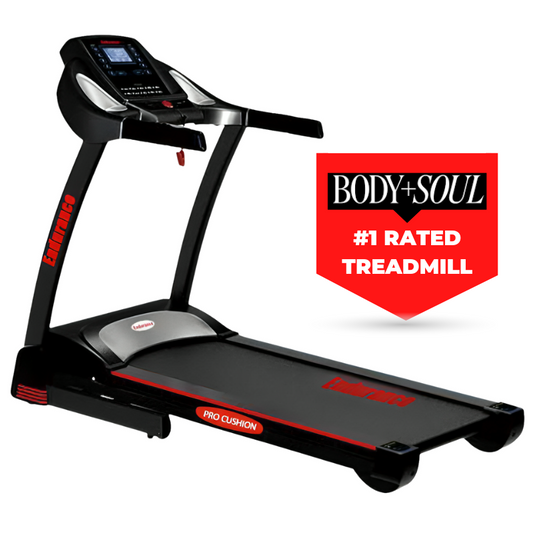 Sold out
Sold outEndurance SPT Treadmill
Regular price $1,149.00 AUDRegular priceUnit price / per$1,699.00 AUDSale price $1,149.00 AUDSold out -

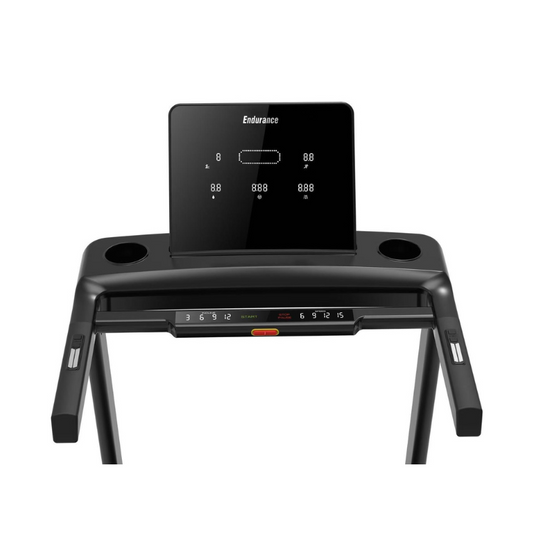 Sold out
Sold outEndurance HPT Treadmill
Regular price $2,499.00 AUDRegular priceUnit price / per$2,999.00 AUDSale price $2,499.00 AUDSold out -

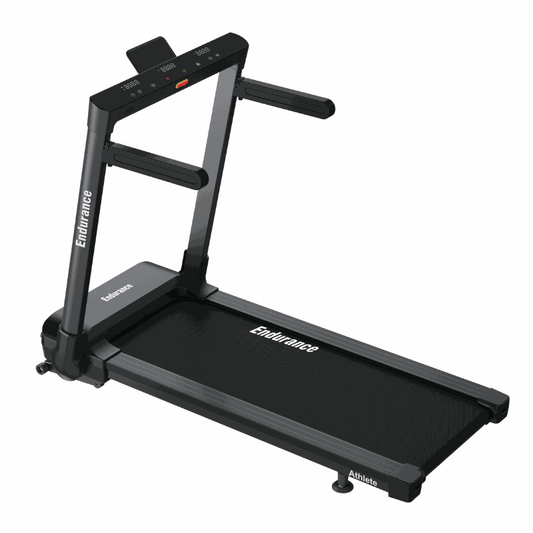 Sold out
Sold outEndurance Athlete Treadmill
Regular price $1,299.00 AUDRegular priceUnit price / per$1,899.00 AUDSale price $1,299.00 AUDSold out -
Endurance SuperStar Treadmill + Incline
Regular price $949.00 AUDRegular priceUnit price / per$1,299.00 AUDSale price $949.00 AUDSold out -

 Sold out
Sold outEndurance Predator Treadmill
Regular price $2,299.00 AUDRegular priceUnit price / per$2,299.00 AUDSale price $2,299.00 AUDSold out -
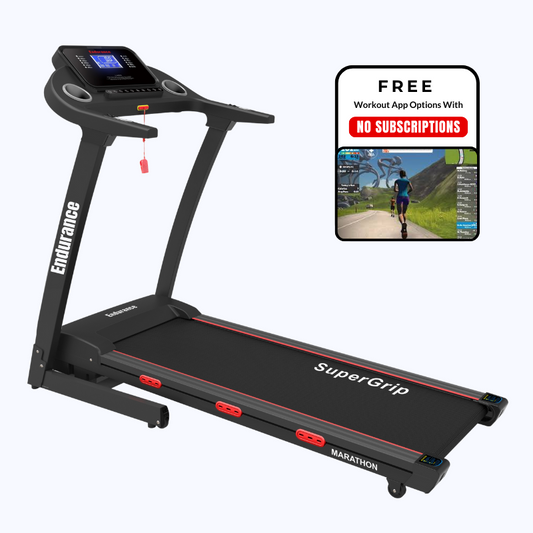
 Sold out
Sold outEndurance Marathon Treadmill
Regular price $1,399.00 AUDRegular priceUnit price / per$1,699.00 AUDSale price $1,399.00 AUDSold out -
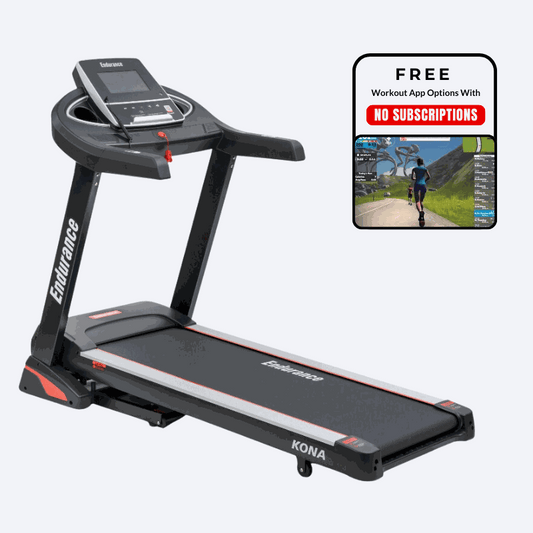
 Sold out
Sold outEndurance Kona Treadmill
Regular price $4,499.00 AUDRegular priceUnit price / per$0.00 AUDSale price $4,499.00 AUDSold out -
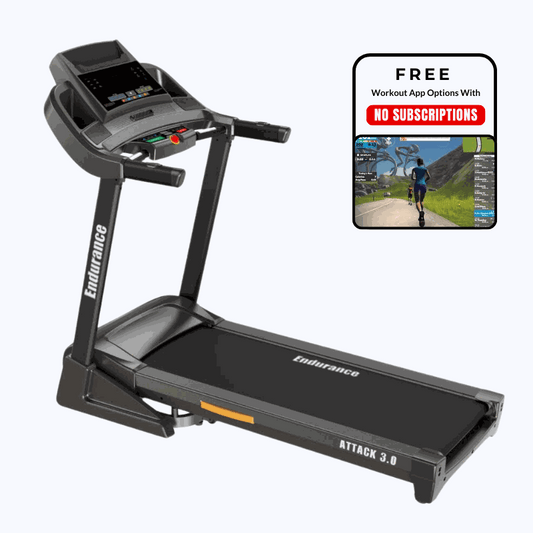
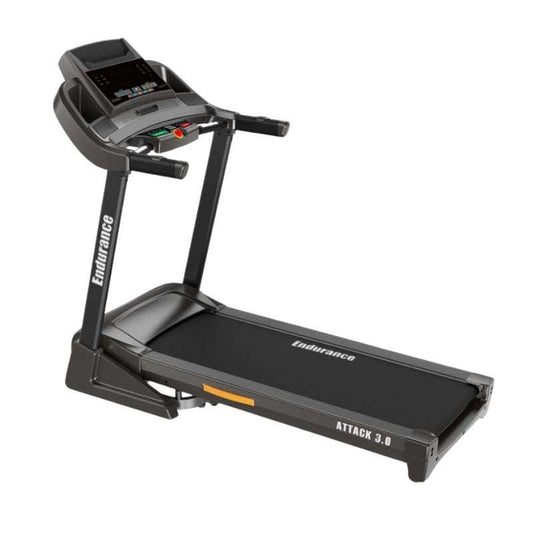 Sold out
Sold outEndurance Attack Treadmill
Regular price $2,699.00 AUDRegular priceUnit price / per$3,249.00 AUDSale price $2,699.00 AUDSold out







